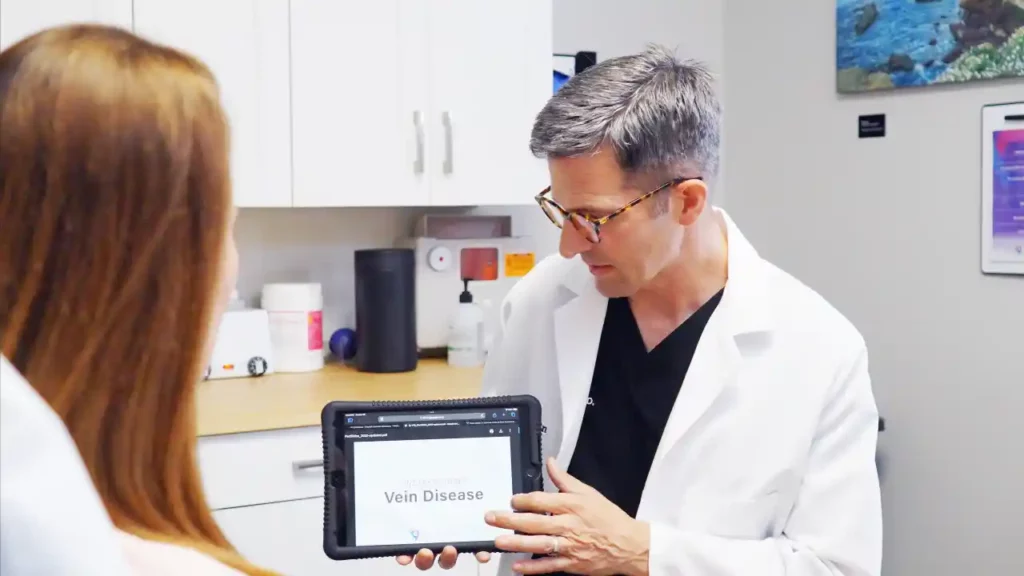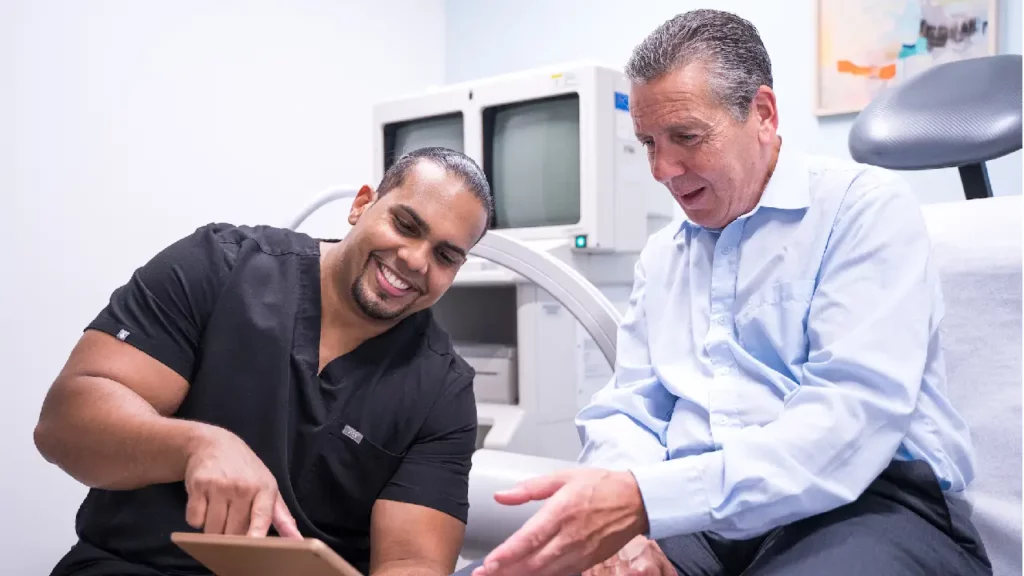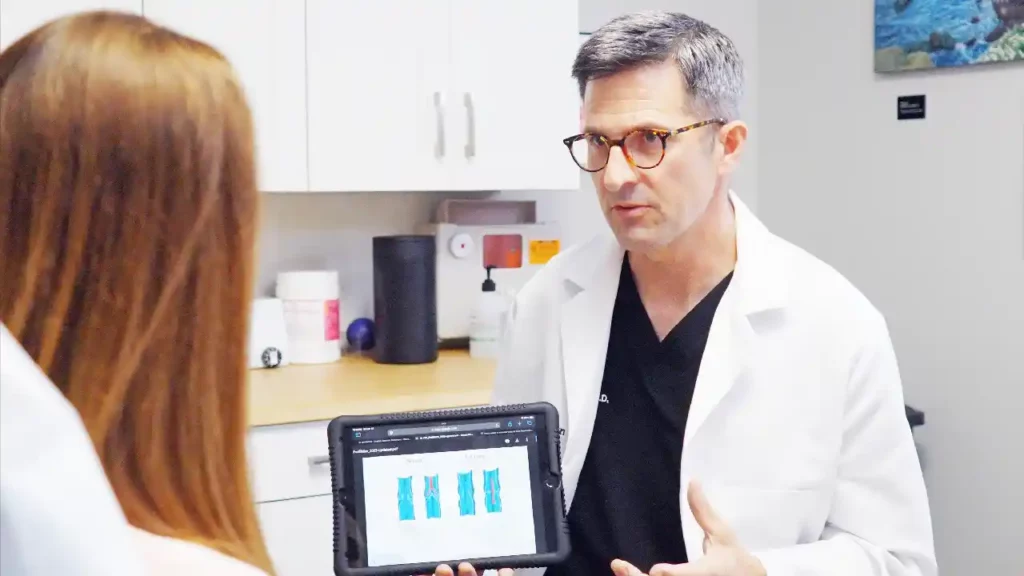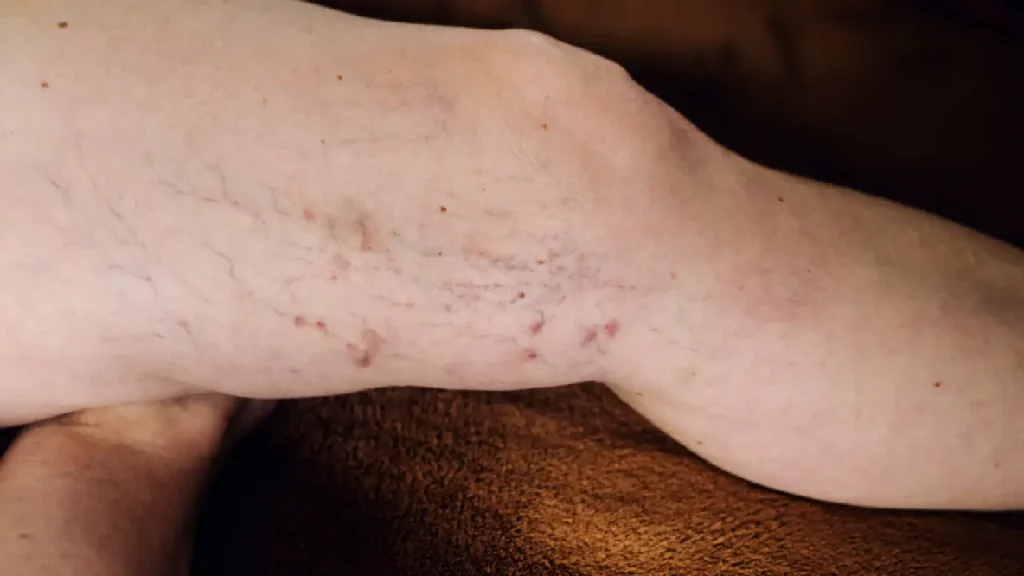Spider vein treatments: What You Need to Know
Spider veins are those small, twisted blood vessels visible just under your skin’s surface. They often look like web or branches and can pop up anywhere on your body, though they’re most common on the legs and face. These veins are more annoying than harmful, but they can make you feel self-conscious. Luckily, getting rid of them is possible with vein treatments like sclerotherapy and laser therapy. Sclerotherapy involves injecting a solution into the veins, causing them to collapse and fade. Laser therapy, on the other hand, uses light to destroy the veins. Both options are effective, but it’s crucial to consult with a professional to figure out which route is best for your specific situation. Remember, the goal is to improve your skin’s appearance and boost your confidence.
The First Step: Consult a vein specialist for spider vein treatments
Before anything else, you’ve got to chat with a specialist. This isn’t just any talk. It’s where you lay it all out—your concerns, your goals, and any questions about zapping those spider veins away. The specialist isn’t just any doc. They’re trained to spot and treat pesky veins, so they know their stuff. They’ll check out your veins, ask about your health history, and maybe even suggest an ultrasound. Why? To get a crystal-clear picture of what’s going on under your skin. This chat is crucial. It sets the game plan and makes sure you’re on the right track for vein treatment. No guesswork, just straight talk to kick those spider veins to the curb.

Different Spider Vein Treatments Available
When it comes to getting rid of spider veins, you’ve got options. First off, let’s talk about sclerotherapy. It’s a go-to for many. Why? Because it’s effective. A doctor injects a solution right into the vein that makes it scar and disappear. Next is laser treatments. Lasers? Yes, you heard right. High-intensity lasers are aimed at the veins, causing them to fade away without any needles. Then there’s endovenous laser therapy (EVLT), a bit more involved but great for larger veins. A laser fiber is inserted into the vein, heating it up and closing it off. Lastly, we’ve got radiofrequency ablation. Similar to EVLT, but instead of lasers, it uses radiofrequency energy. All these methods have the same goal: saying goodbye to spider veins. But the best choice? It depends on your specific situation. Your doctor will help you figure that out.
The Most Common Procedure: Sclerotherapy Explained
Sclerotherapy is the go-to treatment for spider veins, and here’s the lowdown. A doctor injects a special solution directly into the veins. This might sound a bit daunting, but it’s a pretty straightforward process. The solution irritates the lining of the blood vessel, causing the vein to swell, stick together, and the blood to clot. Over time, the vessel turns into scar tissue and fades from view. It’s not instant magic, though. It can take a few weeks to see the full effect. Most people need a couple of sessions to get the results they’re after. While it’s generally safe, there’s a bit of downtime – nothing major, but expect a bit of bruising and swelling. You’ll be back on your feet in no time, but it’s essential to follow your doctor’s aftercare advice to the letter.
Laser Treatment: A Modern Approach to Spider Vein Cure
Laser treatment stands out as a modern technique in tackling spider veins, offering a less invasive option compared to traditional methods. This approach uses focused light energy to heat and damage the vein, causing it to scar and close. Over time, the treated vein fades away. The process is quick, usually taking about 30 minutes, but might need several sessions for best results. It’s mostly painless, with patients experiencing a warm sensation or mild discomfort. Plus, there’s no downtime – you can go about your day after the session. Costs vary depending on the treatment’s extent and your location. Remember, while laser treatment can be effective for smaller spider veins, it might not be the best option for larger ones.
Preparing for Your spider vein treatment: Tips and Advice
Before you get your spider vein treatment, there are a few things you need to do to get ready. First up, you’ll want to avoid sunbathing or using tanning beds for a couple of weeks before your treatment. Sun exposure can make your skin more sensitive and could mess with the results of the procedure. Also, put a pause on any skincare products that contain irritating ingredients, like retinol or glycolic acid, about a week before your appointment. These products can make your skin super sensitive, which is not what you want when you’re getting treated.
On the day of your vein treatment, make sure to wear comfortable, loose-fitting clothes. You’ll likely be asked to wear a gown, but having comfortable clothes for before and after the procedure will make the whole experience less of a hassle. And speaking of hassle, avoid slathering on any lotions, creams, or perfumes to the area that’s getting treated. Clean skin is a must.
Your doctor might also recommend avoiding certain medications or supplements that can increase bleeding, like aspirin or ibuprofen, for a few days before your vein treatment. But this is something you’ll want to chat about with your doc to get personalized advice.
In a nutshell, preparation for spider vein treatment is all about keeping your skin in the best possible condition and following your doctor’s orders. Doing so will help ensure your vein treatment goes smoothly and you’re happy with the results.

What to Expect During the Procedure
When you walk into the clinic for your spider vein treatment, you’ll first chat with your doctor. This chat is super important because it’s when you’ll lay out your concerns and what you hope to get out of the vein treatment. Then, depending on what you and your doctor decide, the actual procedure can go a few different ways. The two main paths are sclerotherapy and laser treatment. Sclerotherapy involves injecting a solution directly into the veins, which makes them shrink and eventually fade away. It’s quick, often taking less than an hour, and you can usually go back to your day right after.
Laser treatment, on the other hand, uses strong bursts of light aimed at the vein, which also causes it to fade over time. This one might feel a bit uncomfortable, like a rubber band snapping on your skin, but it’s also pretty fast and doesn’t need any recovery time. Both options are solid and have a track record of good results, but your doctor will help you decide which one is the best fit for you based on the size and location of your spider veins. So, you walk in, talk it out, get treated, and then walk out, ready to eventually say goodbye to those spider veins.
Post-Treatment Care and Recovery Tips
After getting a spider vein treatment, taking proper care of yourself ensures a smooth recovery. It’s pretty straightforward. Keep the treated area clean and dry for the first 48 hours. This means no hot baths or swimming. Compression stockings are your new best friends. Wear them for at least a week or as advised by your doctor. This helps the veins heal and reduces swelling.
Stay active but don’t overdo it. Short walks are good, but avoid heavy lifting and rigorous workouts for a couple of weeks. It’s normal to see some bruising or slight swelling. If you feel discomfort, over-the-counter pain relievers can help, but avoid aspirin as it might increase bruising.
Stay hydrated and watch what you eat. Foods high in salt can lead to swelling, while foods rich in potassium, like bananas and avocados, can help reduce it. Most folks can get back to their daily routine the next day, but remember, your body needs time to heal. Follow these tips, and you’re on your way to a successful recovery.
